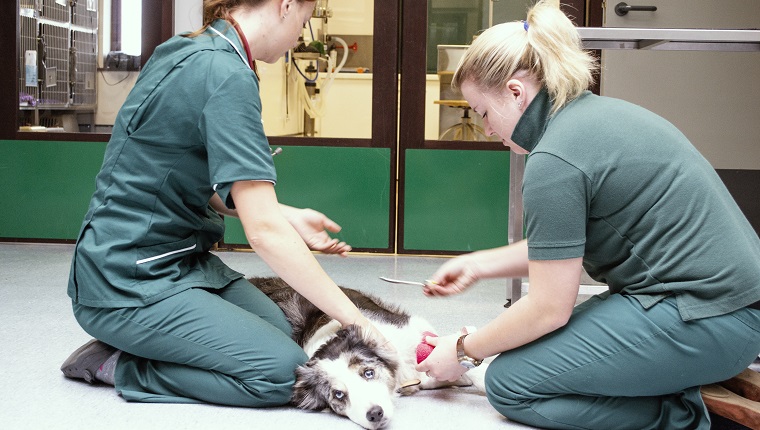Nocardiosis in dogs is a bacterial infection that can negatively impact a number of parts of a dog’s body, including the nervous system, the respiratory system, and the brain. Dogs usually pick up the bacteria from infected, decaying soil, either through an open wound or by inhaling it.
This condition is not the most common in dogs, but it definitely warrants a visit to a vets.
If you see signs that your dog might be suffering from a bacterial infection, then you must consult your veterinarian for a proper diagnosis and course of treatment. Here’s what you should know about the symptoms, causes, and treatments of nocardiosis in dogs.
Symptoms Of Nocardiosis In Dogs
Nocardiosis in dogs can result in a range of symptoms depending on which specific parts of the body have been infected. Some of the most common general symptoms include:
- Acting lethargic
- Losing weight
- Fever
- Mouth ulcers
- Lesions
Causes Of Nocardiosis In Dogs

Dogs primarily contract nocardiosis through infected soil. When a dog’s open wounds make contact with decaying soil, bacteria can enter the body. It is also possible for a dog to get the infection by inhaling the air around infected soil.
Additionally, dogs who have compromised immune systems find themselves at a greater risk of picking up the disease.
Treatments For Nocardiosis In Dogs
If you suspect that your dog might have developed nocardiosis, your veterinarian will want to carry out a procedure to take a look at some of the cells in the abdomen and thorax.
In addition to this process, vets also often use urine tests and X-rays to rule out other conditions that may involve similar symptoms.
When providing treatment, the precise course of action will depend on which parts of the dog’s body have been most affected. In some cases, a dog might require a spell in a hospital to avoid dehydration. In other cases, vets might consider draining fluid around the affected areas.
Generally, treatment usually involves a course of antibiotics. As ever, if your vet prescribes medication for your dog, it is vital that you stick to the recommended frequency and dosage instructions, along with completing the full course of medicine.
To lessen the chances of your dog picking up this disease, it’s best to make sure that you always clean and protect any wounds or cuts that your dog develops.
Has your dog ever suffered from nocardiosis? How did they catch the disease? Tell us all about it in the comments below.




